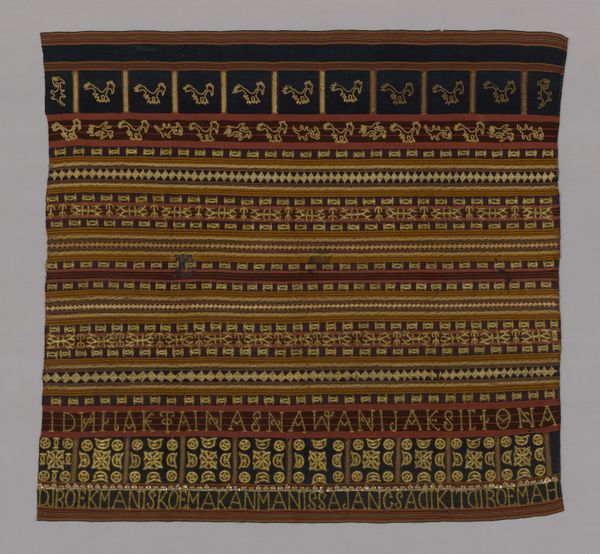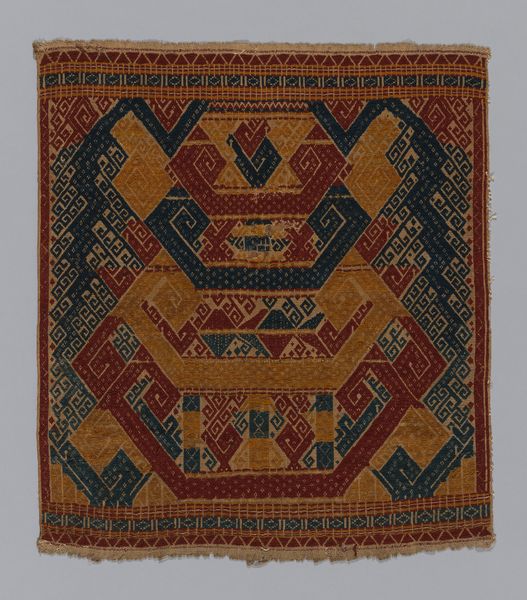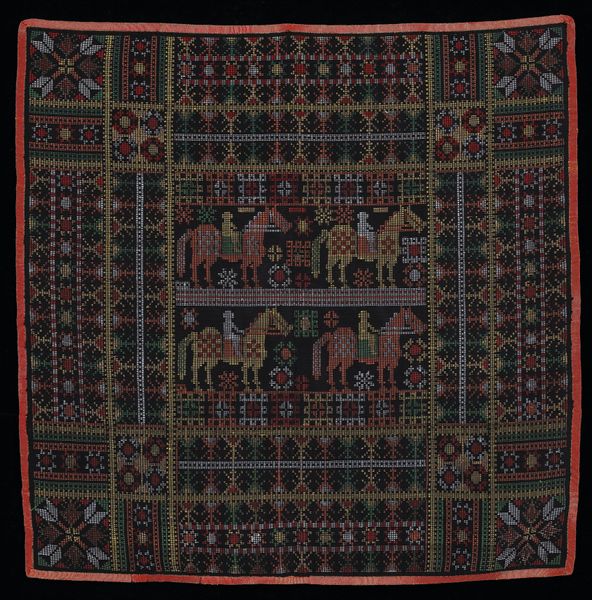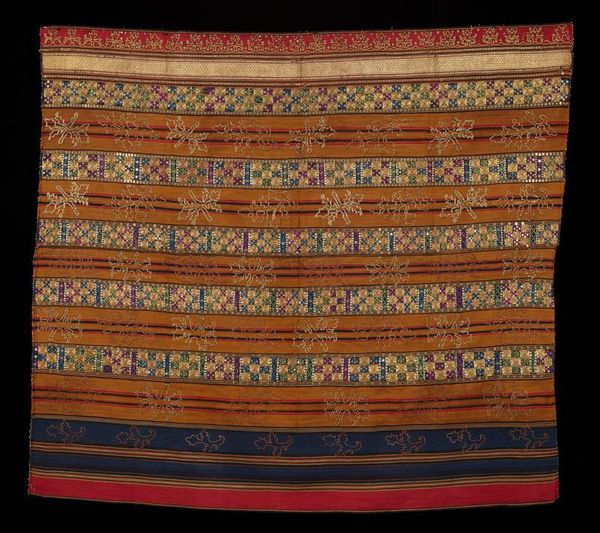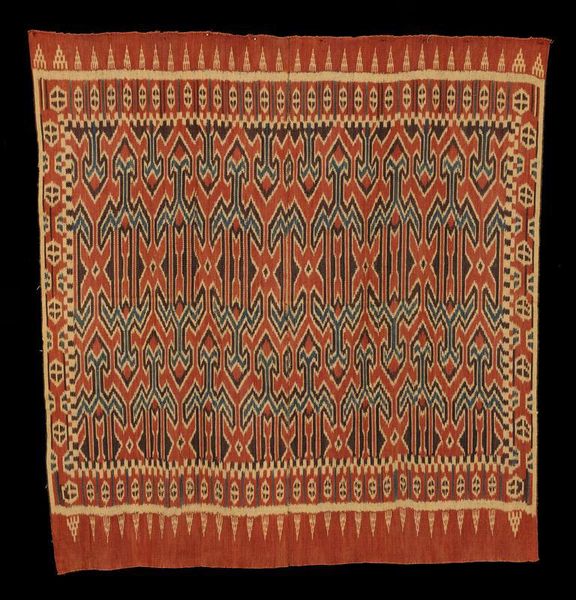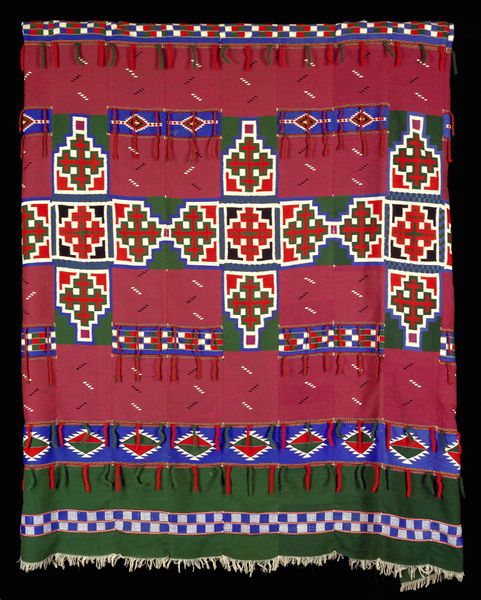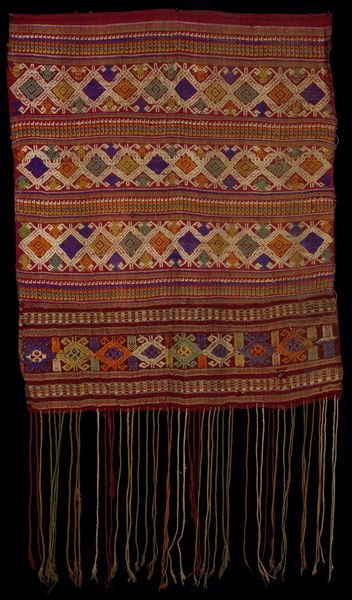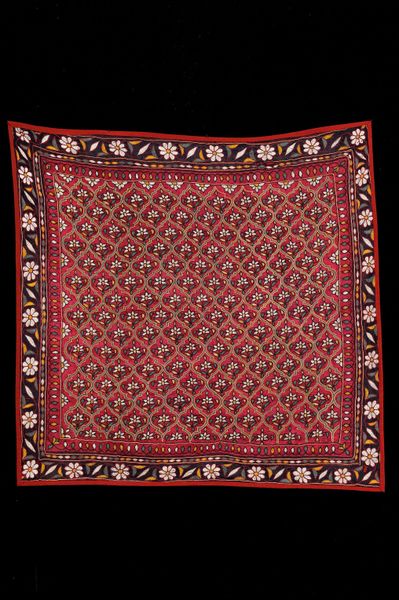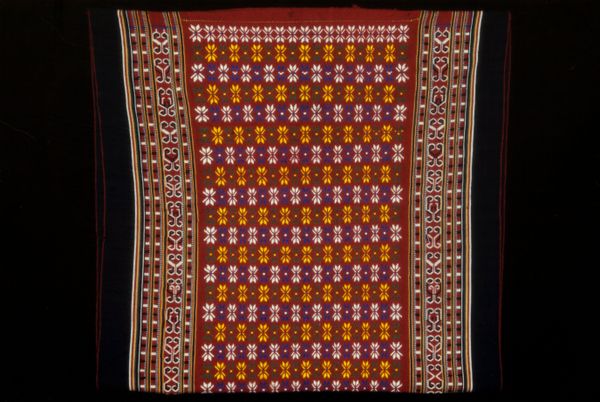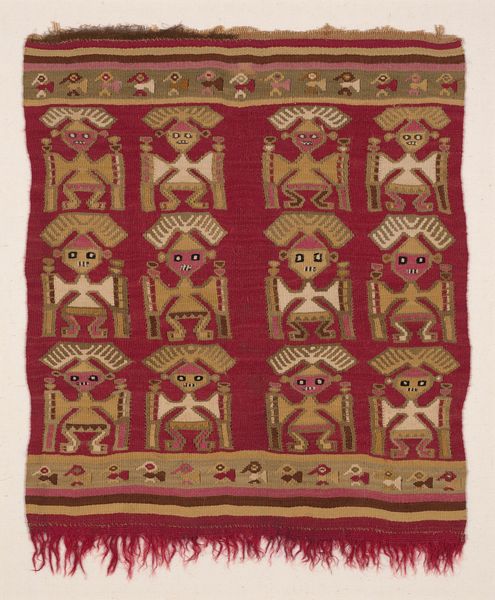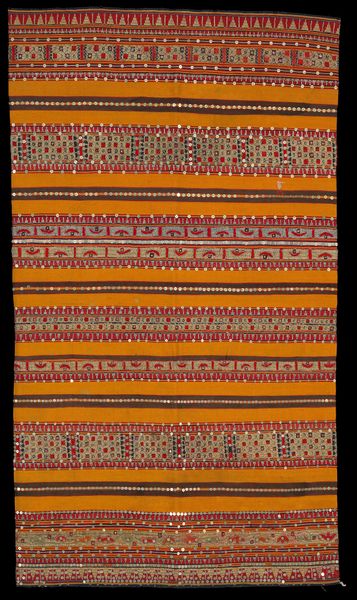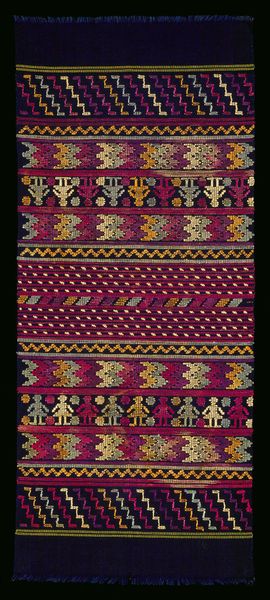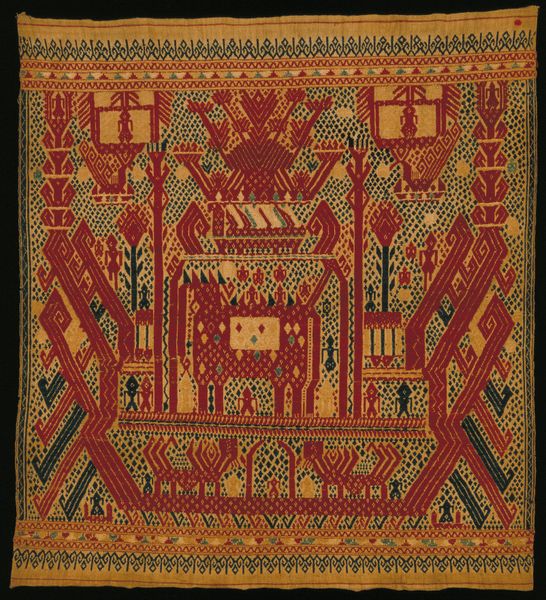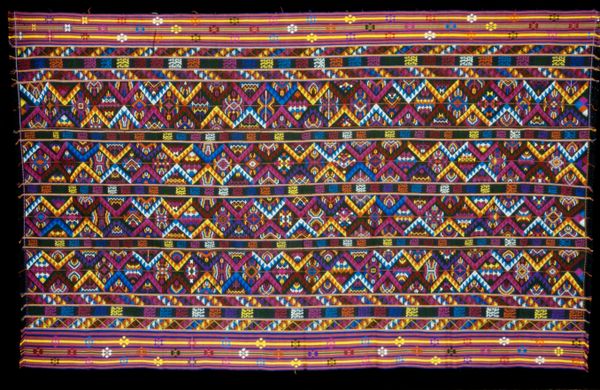
fibre-art, weaving, textile
#
pattern heavy
#
natural stone pattern
#
fibre-art
#
weaving
#
textile
#
geometric pattern
#
ethnic pattern
#
geometric
#
repetition of pattern
#
pattern repetition
#
layered pattern
#
funky pattern
#
repetitive pattern
#
motif
Dimensions: 84 x 91in. (213.4 x 231.1cm)
Copyright: Public Domain
This bed cover was created by an anonymous artist, using cotton, wool, and dyes. We don't know the maker, but we can still appreciate how the cultural context likely shaped its creation. The geometric patterns and vibrant colors resonate with traditional designs found in many cultures. These bed covers were often made by women. As such this textile becomes a canvas for expressing cultural identity and social bonds. The process of weaving could represent a collective activity that reinforces community ties and transmits cultural knowledge across generations. The choice of materials, the dyes, and the motifs carry stories of trade, migration, and cultural exchange. The camel patterns at the center of the textile could reflect the relationship between the people and the Silk Road. This artwork invites us to consider the stories embedded in textiles, and to reflect on how they embody personal experiences, and collective histories.
Comments
minneapolisinstituteofart almost 2 years ago
⋮
The women of the city of Gafsa and the surrounding oasis in central Tunisia have long been famous for their weaving skills. One of their most prized items is the square-shaped, elaborately patterned "ferrachiya", a cover made of wool that is used as a blanket or to decorate a bed. This fine example combines intricate geometric designs with the characteristic caravan motif—a succession of colorful camels interspersed with a few human figures. Historically, groups of people and animals would travel together, in single file, across the North African desert.
Join the conversation
Join millions of artists and users on Artera today and experience the ultimate creative platform.
